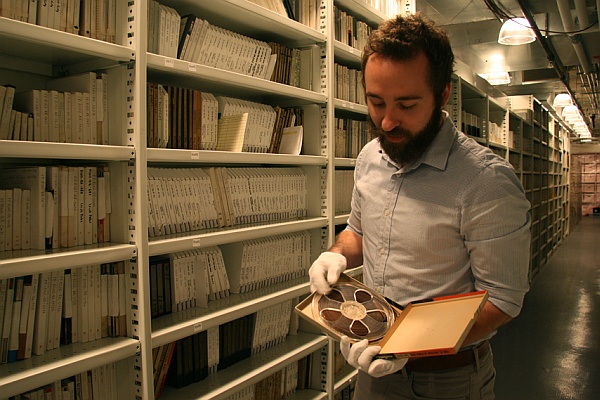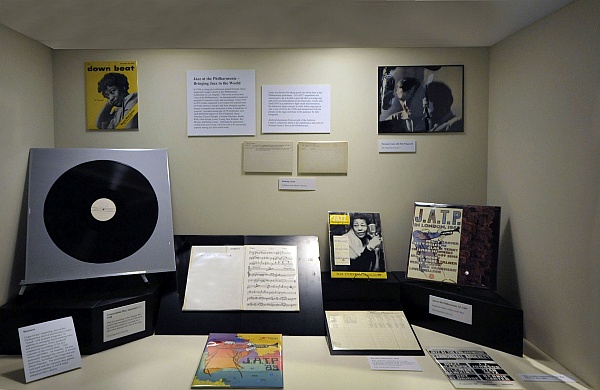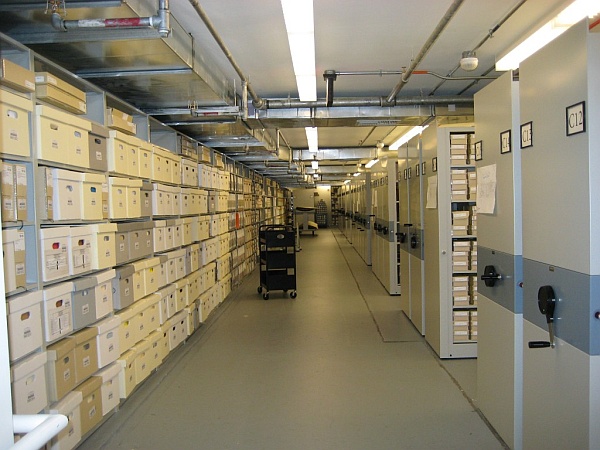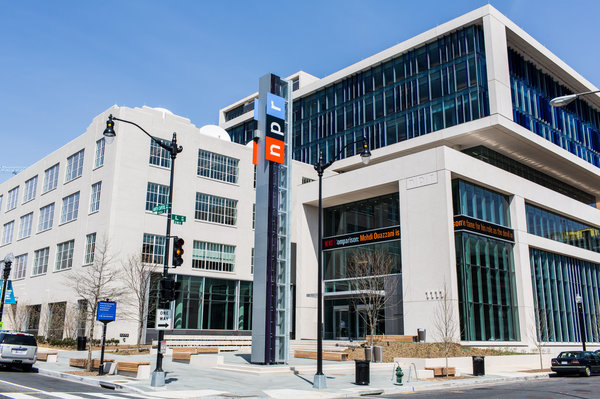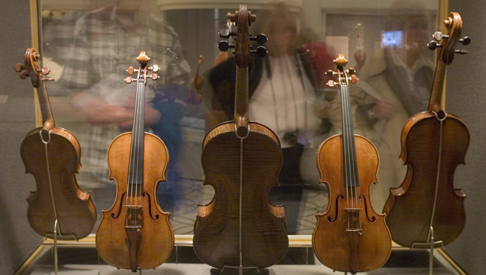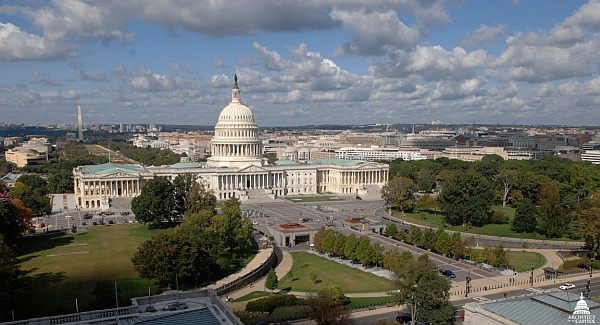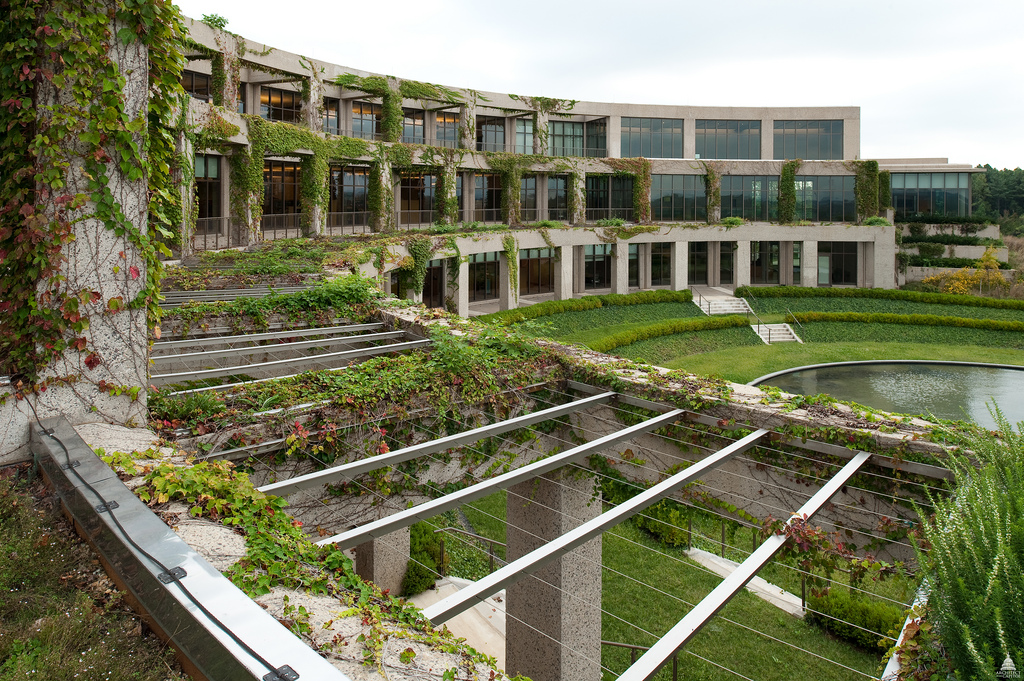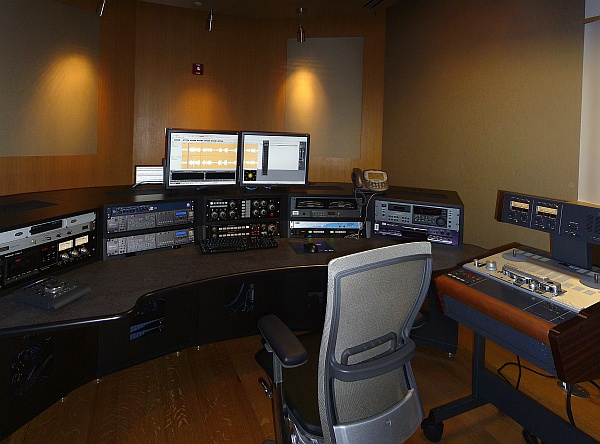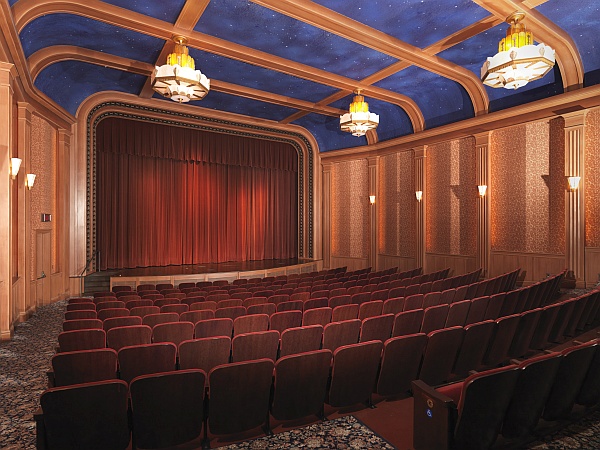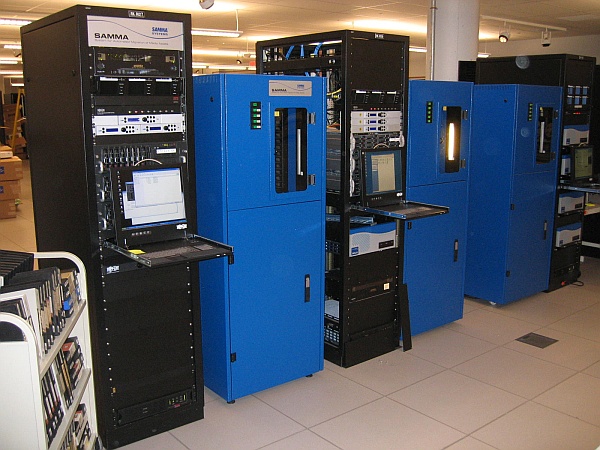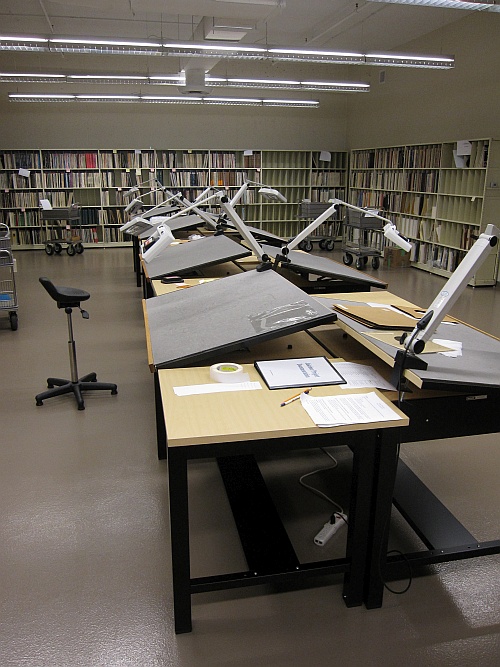All IASA 2016 professional visits take place on Thursday 29th September. You may choose one visit when registering for the conference. There will be no conference presentations on this day. Those on half-day professional visits will be free to experience other museums and points of interest around Washington for the other half day.
Full-day visit (maximum of 110 people)
- Culpeper - National Audiovisual Conservation Center (Library of Congress Packard Campus), Culpeper, Virginia
Half-day visits for those not going to Culpeper :
- NARA -National Archives and Records Administration reformatting labs
- Smithsonian (Mall) - combined visit to 3 archives: Ralph Rinzler Folklife Archives and Collections /National Museum of American History Archives Center / Smithsonian Institution Archives FULLY BOOKED
- Smithsonian (Suitland) - combined visit to 3 institutions: National Anthropological Archives / Human Studies Film Archives / National Museum of the American Indian FULLY BOOKED
- NPR- National Public Radio FULLY BOOKED
- LOC- Library of Congress Music Division and Preservation Directorate / American Folklife Center Archive
- US Capitol
|
Smithsonian (Suitland): Max 12 people; combined visit to all three institutions, all are located in Suitland, Maryland. Transport to be provided. This will be divided into morning and afternoon trips (each trip will be limited to 7 attendees). We will be providing specific information on meeting places and times for this tour when you arrive at the conference. The National Anthropological Archives [NAA] and Human Studies Film Archives [HSFA] collect and preserve historical and contemporary anthropological materials that document the world's cultures and the history of anthropology. Their collections represent the four fields of anthropology – ethnology, linguistics, archaeology, and physical anthropology – and include fieldnotes, journals, manuscripts, correspondence, photographs, maps, sound recordings, film and video created by Smithsonian anthropologists and other preeminent scholars. The HSFA, in conjunction with the National Anthropological Archives, provides a unique anthropological repository for audiovisual, paper, and photographic records. The HSFA works actively with other Smithsonian staff, members of the Society for Visual Anthropology, the Association of Moving Image Archivists and the Council for the Preservation of Anthropological Records to identify and rescue endangered film resources and to promote their research value as an integral part of anthropological records. To enhance the value of such records, the HSFA encourages anthropologists, ethnographic filmmakers, and others who hold films of anthropological interest to donate their audiovisual materials along with supplementary documentation. When possible the HSFA works with filmmakers or subject matter experts to produce recorded sound annotations that further document and enhance the research value of its acquisitions. Collections are organized and described according to archival principles and original materials are safeguarded in a state-of-the-art environmentally controlled storage facility. In total, the archives' holdings include nearly one million photographs (including some of the earliest images of indigenous people worldwide); 2,500 works of native art (mainly North American, Asian, and Oceanic); 6,200 sound recordings (in addition to 10,800 synch sound recordings associated with film projects); and more than 8 million feet of original film and video materials. The Smithsonian's broad collection policy and support of anthropological research for over 150 years have made the NAA and HSFA unparalleled resources for scholars interested in the cultures of North America, Latin America, Oceania, Africa, Asia and Europe. The National Museum of the American Indian (NMAI) Archive Center actively acquires and serves as a repository for the records of contemporary Native American artists, writers, activists, and organizations. In addition, the Archive Center holds the records of the NMAI’s predecessor institution, the Museum of the American Indian (MAI), Heye Foundation. The Archive Center supports the mission of the museum by collecting, organizing, preserving, and making available papers, records, photographs, recordings, and ephemera that reflect the historical and contemporary lives of Native peoples throughout the Western Hemisphere. The archival collections are particularly focused on Native art, culture, knowledge, politics, events, and social and political movements. They also complement the NMAI’s object collections and are used for scholarly research, exhibitions, journalism, documentary productions, and other research, educational, and Native community activities. The architecture of the Cultural Resources Center (CRC) reflects numerous Native American cultural and design principles and represents a Native approach to architecture and landscape that emphasizes a connection to the environment. Carefully placed windows and skylights introduce natural light, and an orientation on the four cardinal directions is reinforced throughout the building, beginning with the east-facing entry. An organic, curving roof and radial walls suggest spiral forms commonly found in nature—nautilus shell, spider web, pine cone, butterfly wing. Inside and outside the building, forms, materials, and colors are inspired by the surrounding environment. Native grasses and indigenous shrubs and trees are incorporated throughout the CRC site, creating a natural and unstructured landscape. |
|
LOC- Library of Congress Music Division and Preservation Directorate / American Folklife Center Archive (Whittall Pavilion) (30 people)
Carol Lynn Ward-Bamford (Music Specialist / Curator) will discuss and display some of the musical instruments in the Library’s collection. The website devoted to the collection provides images of many of the treasures, including the Stradiveri strings, the “Kreisler” Guarneri, and wind instruments in the Dayton C. Miller collection: Staff from the Library’s Preservation Directorate:
The American Folklife Center’s Archive of Folk Culture, established in the Library of Congress Music Division in 1928, is now one of the largest archives of ethnographic materials from the United States and around the world, encompassing millions of items of ethnographic and historical documentation recorded from the nineteenth century to the present. These collections, which include extensive audiovisual documentation of traditional arts, cultural expressions, and oral histories, offer researchers access to the songs, stories, and other creative expressions of people from diverse communities. |
|
US Capitol (20 people) A one-hour tour inside the building of the United States Capitol. Kate Murray (Library of Congress) will lead this group. The tour itself will start at 2.40 pm but the group will need to meet about 30 minutes earlier to get through security. Meet outside the Library’s Whittall Pavilion (ground floor of the Jefferson building) at 2:10 p.m. Please note that the following items are prohibited inside the Capitol and the Visitor Center: liquid including water, food of any kind, aerosol containers, pointed objects other than pencils and pens, knives, any bag larger than 18” wide x 14” high x 8.5” deep. Cameras, video recorders, and battery-operated electronic devices, etc., may not be taken into Senate and House galleries, but can be left at a secured checkstand just outside each gallery.
|
|
Culpeper - Library of Congress Packard Campus for Audio Visual Conservation (110 people) This is an all-day trip, taking roughly 2-2.5 hours each way, transport to be provided. Important: There are no restaurants/cafeterias onsite at the Culpeper facility. Those attending may obtain and bring lunch along with them, OR they may pre-order and buy a box lunch for 12 Euros. Box lunches will consist of a sandwich, a salad, potato chips, pickle, cookie, fruit, and a bottle of water. (Soda machines are available onsite.). When registering, please select one of the following options for the sandwich: Beef / Chicken / Vegetarian. The first centralized facility in America especially designed for acquiring, cataloging, storing, preserving and providing access to the world’s largest and most comprehensive collection of films, TV programs, radio broadcasts and sound recordings. It is the largest facility of its kind, a state-of-the-art center incorporating new capabilities and capacities that are unprecedented within the global audio-visual preservation community. The campus of 415,000 square feet of space in four campus buildings is built on a 45-acre site located near Culpeper, Virginia, 75 miles southwest of Washington, DC near the foothills of the Blue Ridge Mountains. It comprises a Collections Storage Building for all recorded sound, safety film and videotape collections; a Conservation Building for all processing and curatorial staff and the sound, video and film preservation reformatting laboratories; nitrate Vaults built to exacting fire codes for the storage of 140,000 reels of pre-1951 films surviving on nitrate stock; a beautiful 205-seat motion picture theater, evoking the look and feel of the great movie palaces, one of only five in the USA capable of projecting original nitrate film. The Moving Image and Recorded Sound reading rooms in Washington are connected to the Packard Campus by fiber optic cables stretching from Culpeper to Capitol Hill. The Collections comprise nearly 7 million total collection items, including: 1.4 million moving image items: theatrical films and newsreels, television programs, educational, industrial and advertising material; 3 million audio items: commercial sound recordings, radio broadcasts, and early voice recordings of historical figures; Over 2.2 million supporting documents, including screenplays, manuscripts, photographs, posters, clippings, and press kits; These collections are growing at an average rate of 120,000 to 150,000 items annually. The campus has nearly 120 linear miles of shelving for the moving image and sound collections. A number of new preservation technologies– including new digital scanning and imaging systems and robotic reformatting technologies – were invented specifically for the Culpeper facility, and are being tested and implemented for the first time: SAMMA (System for the Automated Migration of Media Assets) uses robotic videocassette reformatting technologies working 24/7 to digitize more than 500,000 television and video collection itemsl; IRENE (Image, Reconstruct, Erase Noise, Etc.), developed by scientists at Lawrence Berkeley Labs, uses digital imaging technologies to generate high-resolution digital maps of grooved recordings, allowing preservationists to reconstruct sound from deteriorating or broken discs; Film scanners have been custom-built to preserve the more than 3000 titles in the Library’s collection of earliest surviving American films that exist only as “paper prints”. More information:
|

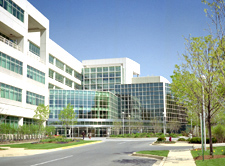 A tour of the audio, video, motion picture film, still image and textual record reformatting facilities of the US National Archives (NARA) in College Park Maryland. NARA’s collections include approximately 12 billion pages of textual records, 7.2 million maps, charts, and architectural drawings, more than 40 million still photographs; 365,000 film titles, 111,000 videotapes, and about 300,000 hours of audio. Tour highlights include motion picture film scanning equipment, a SAMMA robot for mass migration of videotapes, large scale operations for scanning textual materials, oversize scanners for still image materials and automated workflows for quality control of digital audio files.
A tour of the audio, video, motion picture film, still image and textual record reformatting facilities of the US National Archives (NARA) in College Park Maryland. NARA’s collections include approximately 12 billion pages of textual records, 7.2 million maps, charts, and architectural drawings, more than 40 million still photographs; 365,000 film titles, 111,000 videotapes, and about 300,000 hours of audio. Tour highlights include motion picture film scanning equipment, a SAMMA robot for mass migration of videotapes, large scale operations for scanning textual materials, oversize scanners for still image materials and automated workflows for quality control of digital audio files.